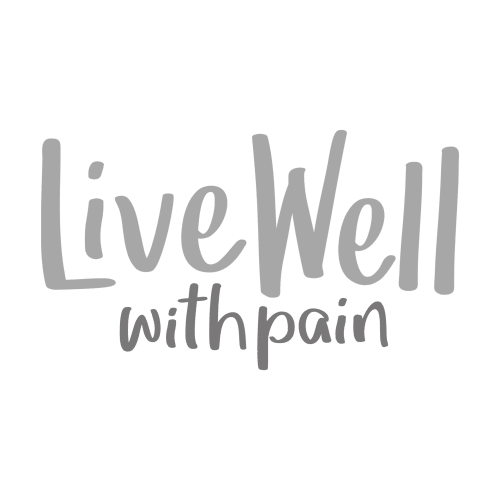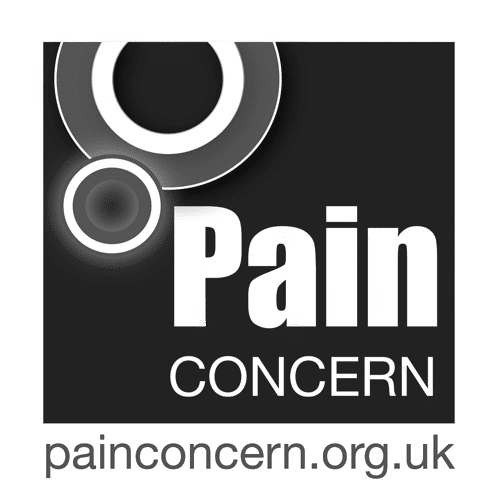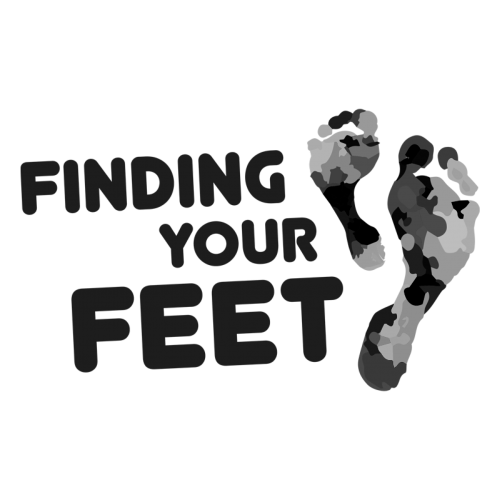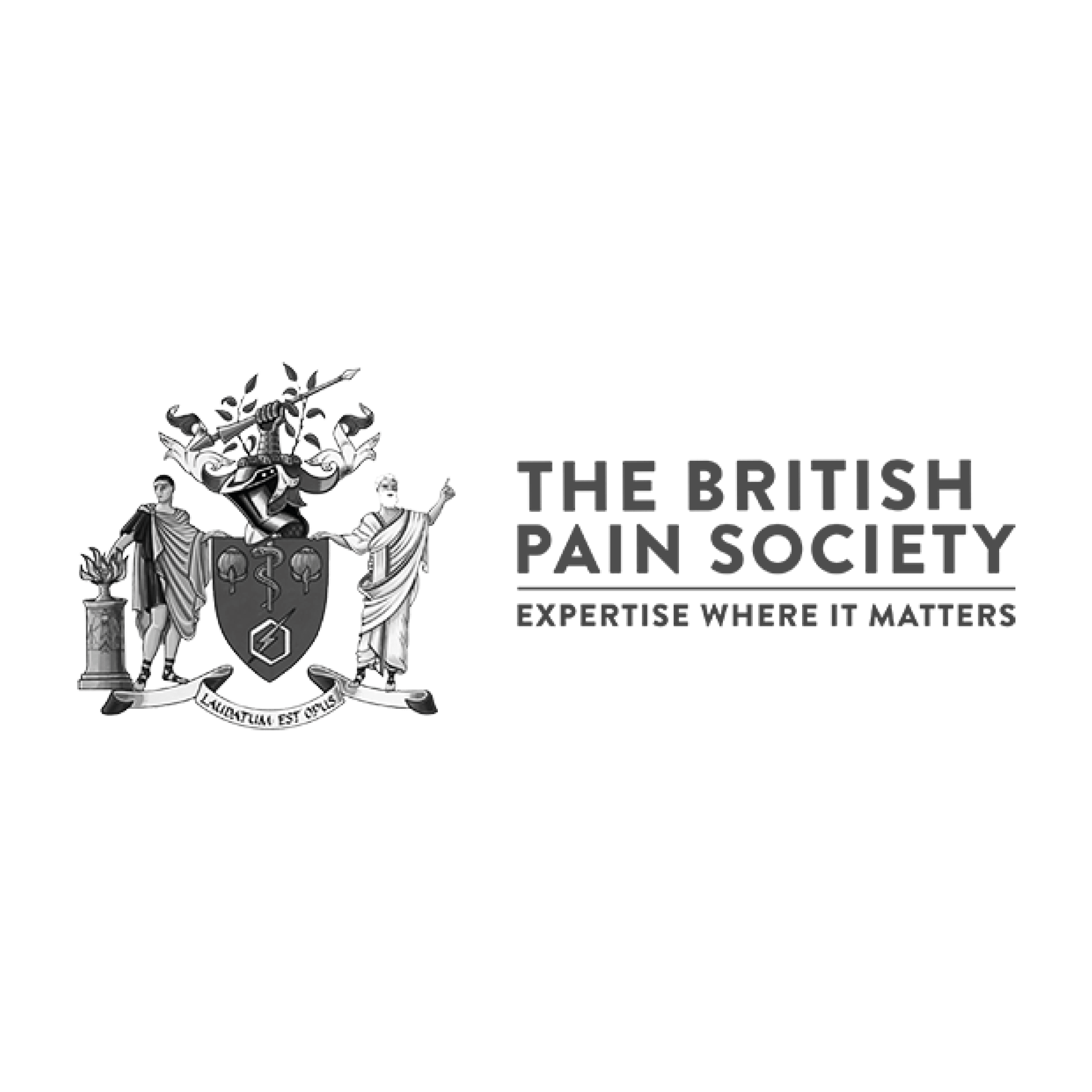Sashira from London has lived with persistent pain since the age of 25.
Her pain story takes us on a journey through not only flippin’ her understanding of pain, but of stress too. Read on…
“Have you ever had a pain that won’t go away? No, I don’t mean a spouse, the boss or the inland revenue (although all uniquely painful in their own ways!). I mean a pain in the body that has decided to take up residence and remain indefinitely, like an unwanted houseguest.
“I’m talking about chronic pain. Not a pain that comes and goes sporadically. Not acute pain, which is short term pain that we all experience when we stub our toe or eat too many custard creams. But a pain that persists beyond what would be reasonable for a given type of injury, damage or illness. A pain that is unseen but can be severe enough to significantly impact one’s quality of life. A pain that, rather than being a symptom of a problem, is the problem itself.
“This is chronic pain, and it’s the pandemic that no one talks about. It affects millions of people around the world, including myself, and in the UK alone, NICE estimates that between a third and a half of the UK population are affected by some kind of chronic pain, with 10-14% having moderate to disabling pain. That’s a lot of people! Yet you rarely hear about it. Those of us who experience chronic pain deal with it largely in silence. We go about our daily lives, trying to make the best of things while the pain, invisible to all but us who feel it, inhabits our bodies and challenges our sanity.
“But I want to talk about it. Actually, I want to shout about it because this condition is complex and misunderstood for the most part. It was only 2019 when the WHO recognised chronic pain as a disease in its own right, in its International Classification of Disease. So it’s not surprising that many doctors still don’t fully understand it, my family and friends don’t get it, the world of work isn’t flexible enough to help people with it and the solution of mainstream medicine is mainly to stuff people full of pharmaceuticals. Sorry to rant, but I hope you’ll stay with me and perhaps relate to some of what I say.
My own brand of chronic pain, or ‘persistent pain’, as I prefer to call it (a less depressing label), is shoulder pain, and I’ve been on sick leave for three and a half years because of it.
“It’s an insane amount of time away from work and the thought of this alone stresses me out. I’m an office monkey and spend most of my time at a computer. This is where my pain condition seems to have started – a type of repetitive strain injury (RSI), caused by working long hours over many years at a laptop. Right now, I’m unable to do more than 100 minutes of computer work in a day (in ten sessions of ten minutes spread through the day). That’s actually pretty good because when this first happened, it was more like five minutes in total. But that’s not going to cut it in my job where I’m basically chained to my computer. In fact, most jobs require computer use in this digital age and I’m not sure what else I could do that doesn’t require it (it’s not like I can act, and I’m no Adele!). I should add that it’s not just computer work that causes me pain; housework, driving, washing, using my phone, and even sleeping can all cause deep aching pain in my shoulder. On a good day, it’s like background noise that I can semi-ignore and live with. On a bad day, I take to the sofa in resigned agony.
“The good news is that I’m finally starting to see the light at the end of the tunnel (more on that later), but it has taken a long time to get a handle on it. And what an emotional rollercoaster it’s been. Stressful things I’ve had to deal with: a) daily pain, b) being unable to work, c) doctors, d) the judgement and lack of support of others because I generally look okay, e) ‘pacing’ activity and learning to do things differently, f) reduction in income and, g) fear and uncertainty. None of these have been easy. But the first challenge was around simply accepting the diagnosis.
The thing about persistent pain is that it doesn’t always start out as persistent pain, and this can make it a particularly confusing experience.
“There is usually something else that triggers it – in my case, it was an RSI-related injury to my shoulder sustained at work. For ages, I thought the injury was the problem. Even when it was first mentioned that I could have a chronic pain condition, I didn’t really understand it. I couldn’t reconcile the pain I felt so viscerally in my shoulder with persistent pain: which is a nervous system condition where the brain produces pain needlessly. It took me ages to understand what was wrong with me. I went through one GP, four consultants, three physios, two pain psychologists, three alternative therapy practitioners and several quacks on this journey, none of whom offered a full explanation of this condition, and it was exhausting.
“I thought I had tendonitis of the rotator cuff, bursitis and osteoarthropathy of the acromioclavicular joint (try saying that after a few shots). At least, that’s what the scans said at the time. I was initially prescribed anti-inflammatories and physiotherapy to remedy this. However, after months of rest, rehab and steroid injections, I was still in lots of pain. It was around six months into my sick leave when the idea that I might have ‘chronic pain’ was first mentioned by my physio. Apparently, my shoulder should have healed by now, so it was likely to be my brain that was the problem, unhelpfully continuing to produce danger signals when there was no longer a need.
“I found this hard to believe. My shoulder would hurt whenever I did too much of anything. It responded to rest and anti-inflammatories (although the latter gave me terrible gastritis). How could it be a ‘brain thing’? And why would my brain do that?
“I’d also had a long history of pain in my right wrist/arm/shoulder, which had been attributed to inflammation in the tendons caused by excessive computer use. This latest episode, like all my previous episodes, was triggered by working long hours at the computer, but I was now 42 and I thought that this was just a progression of the RSI I had lived with since the age of 25: it was simply getting worse with age, spreading up my arm, to my shoulder and neck. However, apart from one long period off work when I was in my thirties, the pain had always settled. With the help of the ‘reasonable adjustments’ (occupational health lingo for supportive and ergonomic equipment) provided by my employer, I had always been able to continue working, albeit with frequent bouts of low-level-but-manageable pain. However, now the pain seemed to be permanently unmanageable.
“My physio explained that the results of the scans did indeed indicate physical injury: there were structural issues which had occurred over time and as a result, certain muscles had weakened and others had been overused, causing the tendonitis, bursitis, etc. So yes, there was a physical dimension to my condition, but the degree of pain I was feeling after this amount of time, for this type of injury, was abnormal. This is the very definition of persistent pain.
So why was my brain still churning out pain? I decided to find out.
“I knew nothing about persistent pain, but then again, I knew nothing about ‘regular’ pain either. All I knew was what I had experienced in the School Of Life. With the help of some books recommended by my physio and Dr Google, I learned some surprising things.
“Nobody likes pain (cue Fifty Shades of Grey jokes), but without it, we probably wouldn’t have made it this far as a species. The body actually has a ‘pain mechanism’ and it exists to protect us. It is a brilliant, complex and nuanced system that has ensured our survival for thousands of years. Pain is not produced by the nerves of wounded tissue as some kind of by-product of damage, as I had thought. Pain is produced in the brain, in response to the detection of danger (or potential danger) and it is a deliberate action on the brain’s part, to alert us to possible damage and encourage us to take action to protect the body.
“I can’t pretend to understand exactly how this works. The pain mechanism is phenomenally complicated, involving a number of bodily systems acting in coordination (i.e. the nervous, endocrine and immune systems), taking into account a huge amount of data in a split second. This data ranges from sense-related information like sight and touch, to memories of similar injuries we might have experienced, to even our current emotional context. Hence, pain is said to involve a complex interplay between biological, psychological and social factors: this is the ‘bio-psycho-social model of pain’. It is a complex and seamless system, but it is not infallible: sometimes it goes wrong. Persistent pain is one example of what happens when the pain system malfunctions. Phantom limb syndrome and fibromyalgia are others you may have heard of.
Why does the pain mechanism sometimes malfunction? This is a difficult question to answer because we still don’t know everything about pain.
“But modern pain science believes that persistent pain is a kind of over-protective mode that the brain has switched on, causing it to continue to produce pain because it thinks there is still a need to protect the body.
“This resonated with something my physio said, which was that persistent pain can occur when pain is ignored. If we don’t listen to pain, the brain increases its effort to protect the body by increasing the volume of the danger signals. And then unfortunately, the volume can get stuck on ‘high’. When I hurt myself at work, I did not listen to the pain. I was working on a very stressful project, and although I was in pain, I felt like I could not leave my team in the lurch. But the pain got worse and worse, and eventually I was forced to ‘down tools’: perhaps this was my brain’s way of making me stop and look after myself.
“However, when I did listen to my body and rest, why didn’t the pain stop? The pain did in fact reduce with rest. But now, my shoulder was acutely sensitive to any activity, with just small amounts of anything being enough to send me into fits of pain which would take days to reduce. I was stuck in what is known as a ‘boom-bust’ pain cycle. After rest, I would restart activity, but I’d somehow do too much and cause a major pain flare up, and then I’d need to rest again to get the pain under control. Then I’d repeat the cycle. Note that it is very easy to inadvertently overdo activity, especially as doctors recommend that you keep moving and I am an impatient person who finds it hard to sit still (my sisters call me ‘the collie’!). In those early days I was still working out my pain boundaries, and pain is a frustratingly slippery thing when you really look at it.
It’s as if the brain has become stuck in ‘protect’ mode and is now sensitive to anything it deems threatening, thus creating pain unnecessarily.
“The central nervous system, the main driver of the body’s pain response, has become overly sensitised, sometimes known as ‘central sensitisation’. A further complication is that the longer we are in pain, the more likely it is that this overprotective tendency becomes ingrained into the nerves: the body ‘learns’ to associate certain activities with danger and this feeds into the persistence of pain.
“Some of the pain literature suggests that certain people might be more susceptible to central sensitisation. For example, people who have had adverse childhood experiences or other traumas, or people with certain personality traits such as being overly conscientious or self-critical: basically ‘stressy’ people, like me, who can’t take a crap without overthinking it! I don’t want to generalise here on personality/experience (the root causes of central sensitisation are different for everyone), but it does make sense that people who exhibit a high degree of chronic stress in their body (whether they’re conscious of it or not) might be the ones prone to central sensitisation and thus persistent pain.
“I’ve had mental health struggles in the past and had extensive therapy in my twenties and thirties, so I know all about stress and how it can mess you up. Yet I still found it hard to accept that I had a pain condition that was likely to have been caused by stress. As mentioned, I couldn’t believe that my shoulder was not the source of the pain. Secondly, this would also mean that my brain was the issue, and so perhaps this was some kind of psychosomatic illness. A dark voice in my head said, ‘this is all your fault’.
“A wave of guilt hit me. Had I done this to myself? For most of my life, I’ve been chronically stressed, and I hated myself for being this way. I wish I could be more relaxed. I wish I could sleep better. Everyone else seemed to be able to just get on with things, so why couldn’t I? Despite all the work I had done on myself, the years of talking therapy, inner child work, CBT, NLP, EMDR, etc., it clearly hadn’t helped because now I had a persistent pain condition. Great.
To be fair, the therapy had helped: but maybe there was more work to do.
“My past therapeutic work was mainly CBT-based, which centres on how the mind creates stress through its thoughts. But now I realised that stress was also deeply embedded in my body (I didn’t know about the mind-body connection back then). I knew that I had a lot of muscle tension. I have always had concrete shoulders and I’d get horrible pain in my head, neck and jaw when I was stressed. The way my muscles operated under stress was the physical manifestation of what was going on in my head, and until now, I had been completely unaware of this. To get my muscles to behave differently was not going to be easy: much like my thoughts, my muscle movements had become a habit formed over decades and it wouldn’t be possible to change this overnight.
“I guess I’ve been hardwired for stress since childhood. I was always sensitive, but watching my mother die of cancer when I was a child didn’t help. Nor did having a father who was grieving, moody and emotionally absent for years. I had two younger sisters and when mum died, I was now second in command in our house, which was more responsibility than I was ready for. I developed the rock-and-roll trait of being hyper-responsible. I was also hyper-vigilant to my father’s moods. I was afraid he would leave us too, so I would strive to make him happy the only way I could, which was to be what I thought he wanted me to be: the ‘good girl’, who helped out at home, did well academically and got a job in finance at a prestigious company. I landed that ‘prestigious’ job, but I didn’t get very far in it because it fundamentally wasn’t me. For years, I tried to make myself into someone I’m not and further lost myself. I floundered in my career. Romantic relationships failed. I was riddled with anxiety and never felt safe in life. The stress of all this manifested in emotional symptoms like anxiety and depression, and physical ones like tense shoulders (amongst other things). So, it’s really not surprising that I have developed persistent pain in this area.
“When I was growing up, the attitude towards stress was generally dismissive. It was thought to be ‘in your head’ and therefore imagined and not real. If you suffered from stress, you were somehow weak and deficient. I guess I unconsciously absorbed this message, which is why I hated myself for being so affected by stress. Thank God this attitude is changing as the scientific and medical establishment finally recognise the very real effect of stress on the mind and body. We now know that whilst stress is part of our design and intrinsic to our survival mechanism– (think of the fight/flight/freeze response), it is supposed to be short lived: a quick burst to help us escape that tiger bounding towards us. Nowadays, we’re not running from life-threatening danger anymore, so that same flight/fight/freeze response is being deployed in ways which are lower level, but more pervasive. A prolonged, chronic stress response is damaging and can cause all manner of health complications, like central sensitisation.
Learning about pain has helped me realise that persistent pain is a very real condition.
“It is a dysfunction of the pain mechanism and sufferers feel actual pain. It also helped me understand why this might have happened to me. When I look back, I have had other episodes of ‘unexplained’ pain in my body that eventually receded (e.g. irritable bowel syndrome (IBS), vaginismus), so perhaps I do have a sensitised nervous system. And maybe my ‘stressy’ personality has been a factor here. I say this about myself with compassion now: I know why I am the way I am and much of it has to do with childhood experiences and the coping mechanisms I developed, which my immature child-self had no control over. In the same way I learnt to stop blaming myself for my years of depression, I also learned to stop blaming myself for this persistent pain condition.
“It took me two years to reach this understanding and accept my diagnosis, and with acceptance came a change in my attitude. All this time, I had believed my problem was physical and so I had been pushing myself to get better by aggressively pursuing physio and activity. But this achieved nothing: and I remained stuck in the boom-bust pain cycle. However, when I accepted my persistent pain condition, I realised that what I really needed to do was to make my brain feel safe. I had to be gentler with myself.
“Just before I had this epiphany, I had become frustrated with my lack of progress and changed my medical team. The best piece of advice my new consultant gave me was that ‘to do more, I needed to do less’: guidance that I initially scoffed at (this could not be more at odds with our fast-paced, modern culture which is all about ‘do more’, ‘be more’, etc). However, these words turned out to be the key.
“I was a stressed Speedy Gonzalez, rushing through life, trying to be efficient and ‘get shit done’. But now, I started to properly pace activity which meant slowing down. Hang that laundry in stages, not all at once. Do five reps of my shoulder exercises instead of ten. Only type for five minutes, not 20. Slowing down meant I paid more attention to my body and could listen more carefully to my pain, using it as a guide and taking care to stop an activity when the pain was getting uncomfortable, rather than carrying on until it was worse. Of course, I had tried this before, but this time I deeply understood that I had to make my brain feel safe. I let go of trying to hurry my recovery and instead, just let my body take the time it needed to heal.
“Yes, it took much longer to do things initially and my inner collie would get frustrated, but my more laid-back approach allowed me to tune into my body and I noticed that my pain levels started to moderate. I’d get less of those severe flare ups that would take me out for days. I could better engage with the physiotherapy. By doing less, I suddenly found that over time, I was indeed able to do more. I could suddenly hang an entire load of laundry in one go, or type for ten minutes without triggering horrible pain. For a few years I’d been taking a drug for my pain condition, Amitriptyline, and I had struggled with this at high doses. Now I could start reducing the dose and, despite the initial increase in pain as I titrated down, by sticking with my gentler pace the pain settled, and the unpleasant side effects of the drug started to fade.
‘Doing less to do more’ is working, but changing your habits takes time (my doctor didn’t tell me that) and it would be nearly another year before I would start to feel a sustained improvement.
“Slowly but surely, I’m getting closer to that light at the end of the tunnel and although I may not be ‘cured’ (and I’m not sure I’ll ever really be pain free), I’m starting to feel much better on a daily basis. Perhaps my brain is beginning to trust me to take care of myself as I begin to work with it, instead of against it.
“I’m hopeful that I will be able to return to work soon and move on with my life. However, if I’m honest, I do have some worries. At the moment, I have the luxury of being able to listen to my body. I can increase or decrease activity depending on my pain levels. But back in the ‘real world’ will I be able to do that? Will I be able to work to a pace that suits me? What happens if my pain flares up again? How will my body cope with the stress of work?
“Persistent pain and stress go hand-in-hand, but I’m not sure this is widely understood. Stress has never had a higher profile: we know so much more about it. We know that stress leads to a number of health conditions and diseases, yet we as a society continue to collectively perpetuate the very behaviours and attitudes that increase stress. Yes, we do need to take some responsibility individually for improving our resilience, but it sometimes feels like swimming upstream because, to borrow a phrase from the renowned physician Gabor Mate, we live in a toxic culture that normalises behaviours that are not good for us. Still, we have to try, because managing stress is a big factor in managing persistent pain.
“If only we could all follow my doctor’s advice and ‘do less to do more’, we might be able to live and work in a way that is more in tune with our bodies. Perhaps then we would all be healthier, happier and ultimately, more productive.”



























